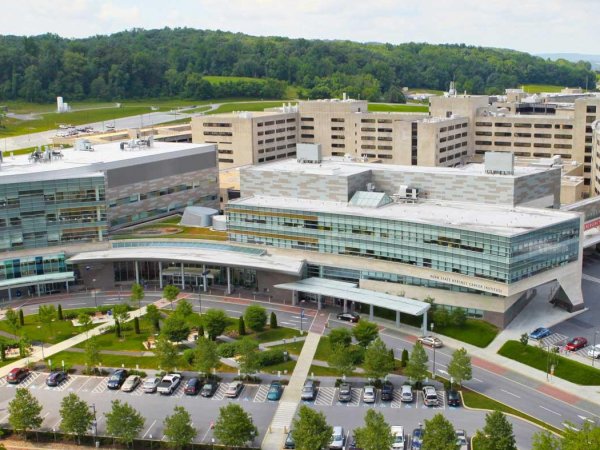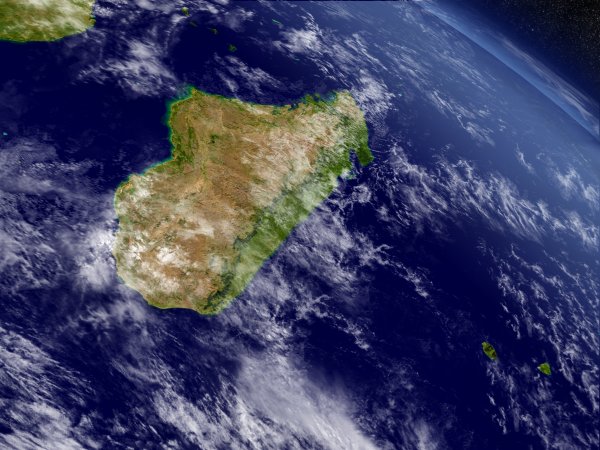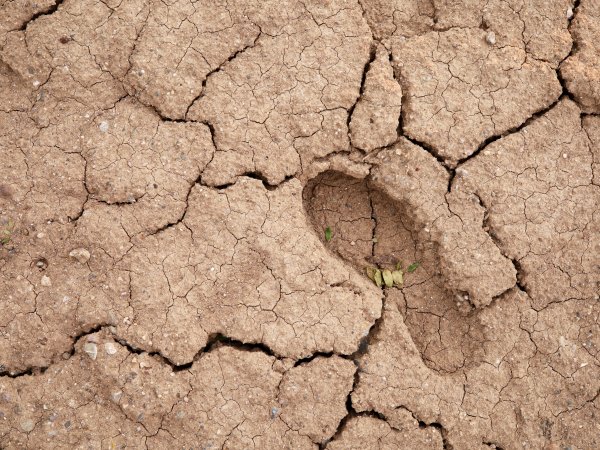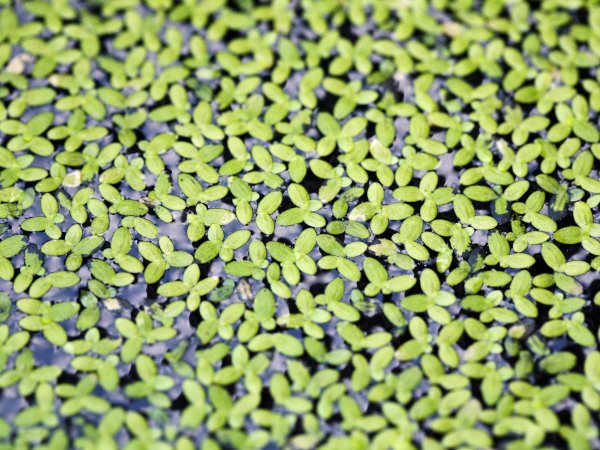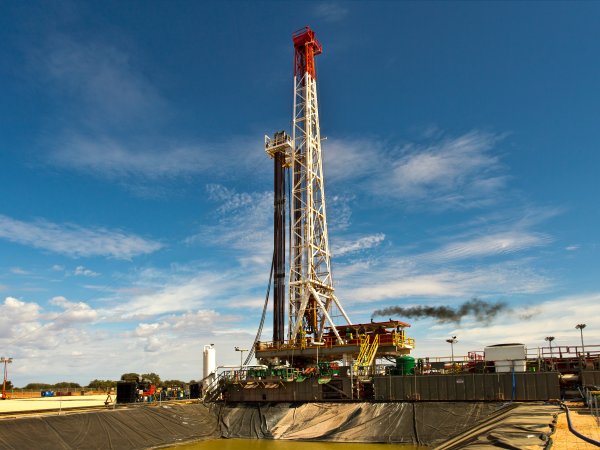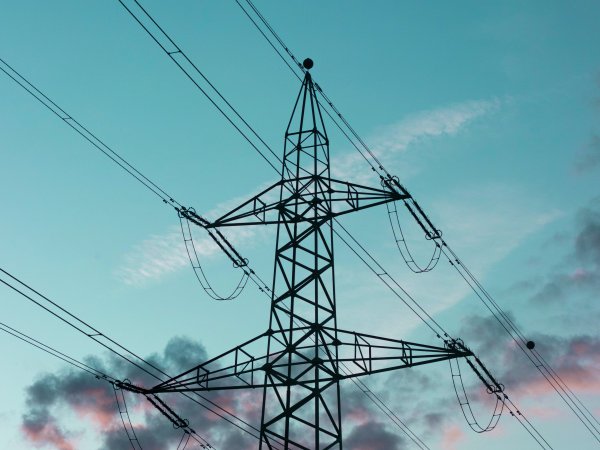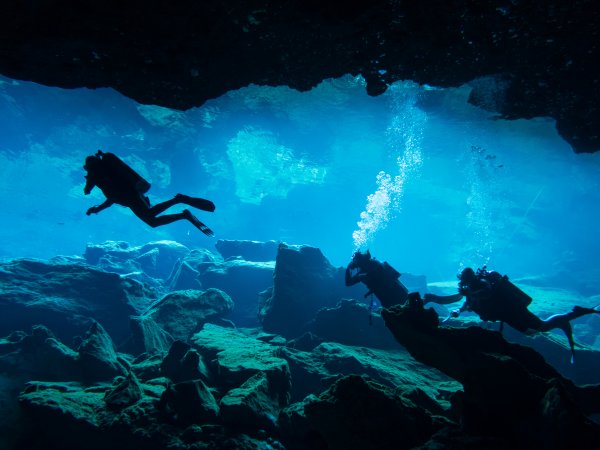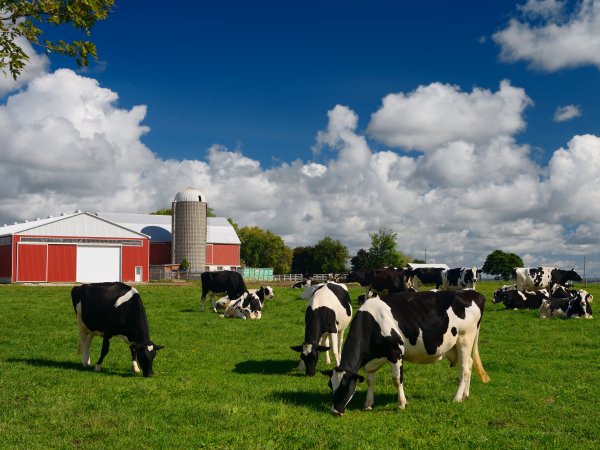Funded Projects
The following 13 projects were awarded seed grant funding in the 2017 IEE Seed Grant Program.
Biogenic Manganese Oxides for the Removal of Emerging Contaminants from Hospital Wastewater
The goal of this project is to develop a cost-effective, point-of-entry, pretreatment system to remove as many emerging contaminants as possible from hospital wastewaters before they enter the regional sewer system. So-called emerging contaminants in sewage include antibiotics, antimicrobial disinfectants, nonprescription drugs, pharmaceuticals, and steroids. These contaminants are not effectively removed by conventional wastewater treatment plants (WWTPs) and are starting to appear in source waters for drinking water treatment plants.
Biogeochemical, Isotopic, and Paleo-Metagenomic Interrogation of Ecosystem Change in Southwestern Madagascar
This project will build upon and integrate our independently funded research programs to study climate change and anthropogenic ecosystem disruption in Southwestern Madagascar. These seed funds will provide the basis for developing a new inter-college collaboration among Perry, Freeman, Culleton, Kennett, and external collaborator Brenner to 1) collect sediment cores from two Malagasy lakes and then 2) generate proof-of-concept, high- resolution biogeochemical, isotopic, and paleogenomic preliminary data from the collected cores.
Ecological Migration in a Large-Scale Quasi-Experiment Design in China: Implications of Climate Change, Landscape Structure, Ecosystem Services, and Government Intervention
One direct impact of climate change is human migration. Environment-related migration has significant impacts on the well-being of migrants and the residents of the receiving communities and has reciprocal effects on landscape structure and ecosystem services. However, most existing studies on environmental migration suffer from two major issues: selection biases that limit causal inferences and an inability to definitively classify individuals as environment-induced migrants.
Feeding 11 Billion: The Biosynthesis of High-Quality Protein from Wastewater
The looming crisis in food, water, and sanitation has been identified as “one of the greatest human development challenges of the early 21st century” (UN, 2006). Approximately one third of the earth’s population (2.4 billion people) are without sanitation, and one in eight (1 billion people) are chronically hungry and suffer from protein-energy undernourishment (PEU).
Invisible or White, but Always Bright
The optical properties of plant canopies control the Earth’s energy balance, and the vegetation net primary productivity, water use, and ability to withstand heat stress. Plant canopies reflect about 25% of the incoming solar radiation and re-emit some of the absorbed energy as thermal, invisible radiation. The foliage albedo –the fractional solar radiation reflected back to the atmosphere– and emissivity –the fractional emission in relation to a perfect emitter- control the radiation balance.
Optimizing the Conversion of Salinity Gradient Energy Into Electrical Power through Computational Simulations
The goal of the proposed research is to maximize electrical power production rates from salinity gradient energy, which is the energy contained in the salt concentration difference between freshwater and seawater. This energy source can theoretically supply 40% of today’s global electrical demand. PI Gorski is currently studying the conversion of salinity gradient energy into electricity using a new approach – capacitive mixing – which exploits salt concentration differences in waters to charge and discharge electrodes.
Re-Conceptualizing Impact Analysis of the Food-Energy-Water Nexus: Evaluating the Proposed Ethane Plant in Beaver County, Pa
Through a case study of a newly permitted ethane plant in western, PA, this project proposes to develop an expanded impact assessment framework that incorporates multiple intersecting impacts of development (social, environmental, economic, health) and temporal and scalar dimensions. The framework will help to advance nexus research by developing a decision analysis tool that simultaneously considers impacts to water, food and energy systems. The project also provides a unique opportunity to establish a longitudinal research project as the plant was only permitted in June 2016.
Removing Radium from Hydrofracturing Fluids with Tailored Clays
Through this IEE seed grant, this newly-collaborating interdisciplinary team aims to remove radium from hydrofracturing fluids by sorbing the radium onto tailored clays. Dr. Komarneni, through prior research published in Nature, has synthesized clays that host a tight inter-layer structure that captures radium, preferentially over other cations such as barium, sodium, etc. As a high-risk, high- gain application of this novel phenomenon, we aim to dose these tailored clays into hypersaline hydrofracturing fluids so as to sorb the fluids’ radioactivity.
Riparian Bird Feathers as Indicators of Shale Gas Development
Feathers are commonly used for sampling exposure to environmental pollutants as many heavy metals and other pollutants become incorporated into the feather structure and are an indication of exposure during the time the feathers were growing. In particular, songbirds do not store calcium for egg shell production in their legs but instead need to obtain it in their diet by feeding on calcium rich items in the days preceding egg laying.
Smart Traction Systems for Weak Power Grids
We propose a new interdisciplinary research partnership involving power systems engineering and economics to investigate the mechanisms by which carbon-free generation resources can provide stabilizing inertia to otherwise weak power grids, and the market models needed to incentivize the provision of heretofore unpriced inertia services.
Social Adaptive Capacity in Reef-Proximate Communities: Coupled Natural-Human System Dynamics in Cartagena, Colombia
Human activities are driving coral reef socio-ecological system change worldwide. Although the local impacts of global climate change have received a lot of attention from the academic community, an integrative analysis of other local ecosystem change resulting such as pollution and coastal development on these coupled natural and human reef systems is lacking. The proposed study aims to fill that gap.
The Caves and Coastal Ecosystems Connection
Karst aquifers provide ~25% of the drinking water resources for human societies and underly roughly 10% of the global land surface. Because of the rapid movement of water and pollutants through these aquifers, they are particularly vulnerable to human impacts including sea level rise and agricultural, industrial, and urban development. In karst regions, unknown quantities of groundwater discharge into coastal marine environments at submarine springs.
Toward a Lower-Carbon Food System: Quantification of Methane Emissions from Animal Agriculture
Animal agriculture is a major contributor to anthropogenic emissions of methane, a potent greenhouse gas. Accurate quantification of emissions from dairy farms is challenging and, currently, there is a large discrepancy between top-down and bottom-up emission estimates. We propose to collect methane emissions measurements using the eddy covariance method at two dairy farms in Pennsylvania to evaluate and, if warranted, improve of a state-of-the-science methane emissions model. Emissions measurements will be collected from both farm manure management operations and dairy barns.
Human Health and the Environment Seed Grant
Human Health and the Environment Multi-Unit Seed Grant
Cognitive Changes Associated with Hormonal Treatment for Breast Cancer
Sheri A. Berenbaum, College of the Liberal Arts
Environmentally Linked Viruses and Dynamic Transmission Networks
Nita Bharti, Eberly College of Science
Patient-Specific Prediction of Susceptibility to Acute Lung Injury Resulting from Exposure to Environmental Pollutants and Toxic Industrial Chemicals
Ali Borhan, College of Engineering
Digital environmental monitoring of human water supply watersheds by high-throughput phenotyping of plankton and meiofauna
Keith C. Cheng, College of Medicine
From Environmental Change to Left-behind Children’s Well-being in Rural Highlands
Guangquing Chi, College of Agricultural Sciences
UPRITE (Universal Personal Rebalance Information Technology Enhancement) A Device for Anticipating and Preventing Elderly Falls
Andris Freivalds, College of Engineering
Therapeutic Modulation of the Tumor Immune Microenvironment in Skin Cancer with Localized Activation of Nanoparticle Delivered siRNA
Adam Glick, College of Agricultural Sciences
Predictive Modeling of Health Risks and Outcomes from Clinical, Environmental, Contextual, Behavioral Data: A Proof-of-Concept Study Focused on Breast Cancer in Central Pennsylvania
Vasant Gajanan Honavar, College of Information Sciences and Technology
Drug-Loaded Antimicrobial Nanogels for Combinatorial Therapy of Antibiotic-Resistant Tuberculosis
Scott H. Medina, College of Engineering
Using an Environmental Justice Lens: An Integrated Pest Management and mHealth Program Aimed to Reduce Pesticides Exposures for Vulnerable Hispanic Mushroom Farmers in Pennsylvania
Shedra Amy Snipes, College of Health and Human Development
Identification of Toxicity Parameters Associated with Combustion Produced PM2.5 Surface Chemistry and Particle Structure by in Vitro Assays
Randy Lee Vander Wal, College of Earth and Mineral Sciences
RFP
Penn State’s Institutes of Energy and the Environment (IEE) has identified five strategic research themes of focus (listed alphabetically): Climate and Ecosystem Change; Future Energy Supply; Smart Energy Systems; Water and Biogeochemical Cycles; and Health and the Environment.
IEE established the Seed Grant Program 3 years ago to foster basic and applied research focused on these strategic research themes. Over the three previous rounds IEE has awarded over 1.2 million dollars to 57 projects with investigators from 15 Penn State Colleges and Campuses.
Preferred activities for funding under the Seed Grant Program are:
- Development of new interdisciplinary research teams to position them for substantial external funding success
- Novel research in theme areas, especially high-risk proof of concept projects
- Collaboration between junior and senior faculty to promote research development, mentorship
To increase the impact of the Seed Grant program and align with expanding federal opportunities, proposals addressing the food-energy-water nexus, climate change, and the future of the electric grid will be given particular consideration; however, excellent proposals in any facet of the first four themes (Climate and Ecosystem Change; Future Energy Supply; Smart Energy Systems; Water and Biogeochemical Cycles) will be considered.
A separate multi-Institute call on the theme of Health and the Environment will be issued later this fall.
Seed Grant Eligibility
All Penn State faculty members (tenured, tenure track, and fixed term) who hold an appointment of half-time or more at any Penn State campus are eligible to submit a seed grant proposal as a Principal Investigator (PI). Researchers, students and staff from Penn State, Pennsylvania state agencies, federal agencies, and private industry may be included as collaborators in seed grant proposals. Please note that while most proposals are expected to include multiple investigators, there can only be one responsible PI for each application. In addition, investigators may only serve as PI on a single proposal. New investigators will be given preference over those who may have previously received an IEE seed grant.
Funding Availability
Approximately $300,000 of funding is available through this seed grant solicitation for 2016-2017.
To encourage establishment of new collaborations and enhancement of networks, larger grants will require innovative partnerships of investigators from multiple colleges and/or campus locations. Funds up to $5,000 can be awarded for a single investigator project; up to $10,000 for two or more faculty from the same college (University Park) or Commonwealth Campus; and up to $25,000 for multi-college (across University Park) and multi campus (between campuses) collaborative grants.
Funds can be used to support research development and coordination expenses such as:
- Graduate and undergraduate student support
- Instrumentation fees and sample analysis to collect preliminary data
- Equipment, supplies, and participant payments
- Travel associated with conducting/reporting seed grant research (Penn State participants only)
- Hosting a research planning meeting for an interdisciplinary team
- Planning and hosting conferences and symposia
- Funding for data conversion technology and wages to support date conversion
Funding is limited or not allowed for the following:
- Single college/campus funding, even with several departments, is capped at $10,000
- Summer or supplemental salary support for faculty
- Postdoc salary
- Travel support to attend conferences
Submission Instructions
All pre-proposals must be submitted electronically via upload from the link at http://www.psiee.psu.edu/psiee-seed-grant-program no later than 5:00 pm on Wednesday, November 2, 2016. Each pre-proposal is limited to a 1-page project description and additional pages for an appendix.
The project description must include the following:
- Title of project
- List of PI and collaborators, including college, department and/or campus
- Short description of the project
- Short description of how this project will leverage seed funding
- Nature of collaboration (new/existing; mentorship opportunities)
- Total funding to be requested, including short description of anticipated expenditures
The appendix will include a list of all collaborators, their colleges and/or departments, and 1-page resumes for the PI and all co-PI’s.
Timeline for pre-proposals and proposals (note, all deadlines are Wednesdays)
Oct. 13, 2016 Informational webinar for pre-proposal questions, 9:00-9:45 am
Nov. 2, 2016 Pre-proposals due no later than 5:00 pm
Dec. 2, 2016 PIs notified of pre-proposal result; full proposals requested
Jan. 25, 2017 Full proposals due no later than 5:00 pm
Early Mar. 2017 Seed Grant funding decisions announced
Grant funds will be available by April 1, 2017 and must be expended by June 30, 2018.
Review Criteria
Pre-proposal and Proposal reviews are based upon the following criteria:
- Intellectual merit of the proposal, including relevance to strategic priorities and contribution to global leadership in a prioritized theme; creativity and innovation; significance of goals and results; soundness of research plan; and likelihood of successful project completion. Please note that these proposals are reviewed by a cross section of researchers with different backgrounds; communication to a broader audience is helpful to project reviewers.
- A credible and clearly articulated strategy for leveraging this seed grant investment into exceptional scholarship and/or significant external funding. Potential for additional/continued activity beyond the seed grant phase may include plans for continued activity such as applications for external support from federal, state or local government agencies, industry, private foundations, etc.; plans for continued research activities involving in-kind support, teaching activities, on-going scholarly work, etc.; plans for public engagement and outreach; and expanded implementation by external stakeholders. Providing specific examples has been helpful to prior seed grant recipients.
- Realistic potential for developing new and productive collaborations between PIs with special consideration given to mentorship and collaborations between junior and senior faculty. Possibilities for additional activities and projects which draw upon the seed grant partnership should be specified.
- Appropriateness of the budget request for supporting the proposed research.
- Extra consideration will also be given to projects that are able to take data and help leverage that into knowledge and on the ground impact. For more on this, see http://www.psiee.psu.edu/research.
Pre-proposals will be reviewed by a set of reviewers, and categorized as “Request Proposal” or “Do Not Request Proposal.” Those invited to submit a full proposal will be given additional information.
Please direct any questions regarding the proposal process to psiee@psu.edu.

